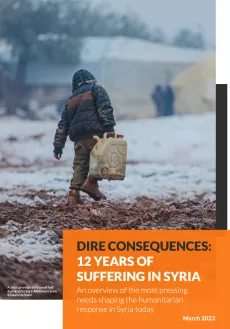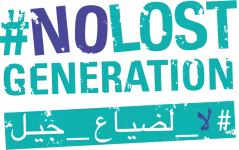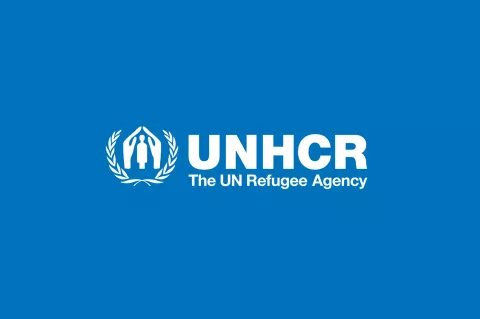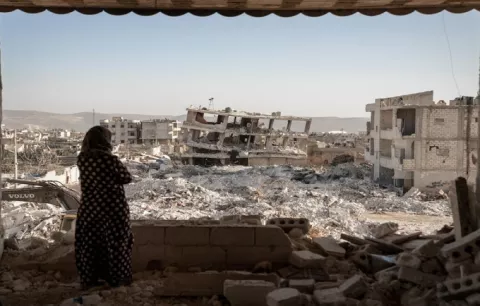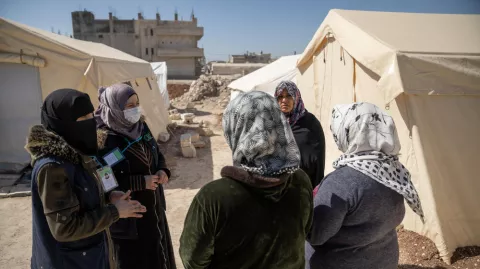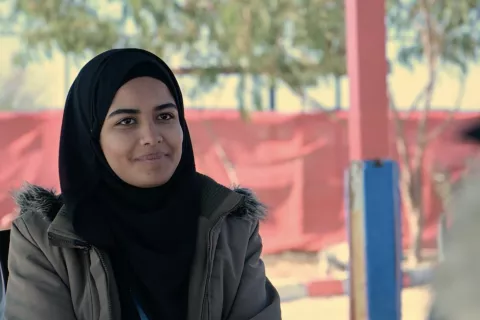Dire consequences: 12 years of suffering in Syria
An overview of the most pressing needs shaping the humanitarian response in Syria today
Highlights
Humanitarian needs are currently at their highest in Syria and neighbouring host countries, as Syrian families, girls and boys continue to bear the brunt of conflict, violence and displacement, 12 years on. Syria is the world’s largest displacement crisis with more than 13 million people having either fled the country or been displaced within its borders since 2011. With 6.9 million IDPs, Syria is also the country with the most internally displaced people. The humanitarian situation in neighbouring host countries also remains critical. Türkiye hosts the largest refugee population in the world, which includes over 3.7 million Syrians. Lebanon and Jordan are also among the countries with the highest number of refugees per capita globally, including millions of vulnerable Syrian women, men and children residing in refugee camps, informal settlements and host communities.
Meanwhile, funding for the Syria crisis is dwindling further, year after year, while a political solution to the ongoing war remains largely elusive. World Vision has been operating in Syria – as well as Lebanon, Jordan, Iraq and Türkiye – as part of the Syria crisis response since 2013, with the aim of giving all Syrian children a voice while responding to their most pressing needs. After 12 years of conflict, the cost of the Syrian war has been disastrous. Our Syria 10 report estimated that the cost of the conflict over the 2011-2020 decade amounted to US$1.2 trillion in lost GDP, and is believed to be much higher today. This loss of productive capacity severely impacts Syrian children and young people, as less money is invested in the key services they need to thrive, such as education and healthcare.
Among the 6.4 million children living in Syria today, more than 2 million are currently out of school, 40% of whom are girls at risk of being exposed to child marriage. Many of them have known nothing but war in their short lives and have had to endure or witness multiple layers of violence and suffering, impacting both their physical and mental health. Recurring attacks on health infrastructures, schools, and IDP camps – in addition to the COVID-19 pandemic and, more recently, cholera outbreak – have all devastated the prospects for child survival and development in Syria. Even if the conflict were to end today, the economic repercussions would include an additional $US 1.7 trillion by 2035, when factoring in the children whose education and healthcare have been negatively affected, dimming their hopes for happy and fulfilled futures ahead.
On this twelfth year of the Syrian conflict, another layer of suffering and trauma has been added to the compounded crises faced by Syrian families and children following the devastating earthquakes that hit Syria and Türkiye on February 6th, 2023. More than 50,000 men, women and children have been confirmed to have died, and 850,000 Turkish and Syrian children were displaced following the destruction of tens of thousands of homes and buildings on both sides of the border.
Syrian children in particular are at an increased risk of developing symptoms of post-traumatic stress disorder (PTSD) as recurring childhood exposure to adversity stemming from the Syria crisis may result in a variety of behavioural and emotional problems. Meanwhile, aid has been slow to reach Northwest Syria and has yet to meet the enormous needs following last month’s earthquakes, with Syrian children finding themselves once again at risk of being forgotten by the international community.
